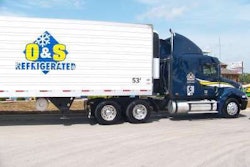The American Trucking Associations on Thursday, May 21, announced its support for the Safe Roads Act introduced this week by Sen. Mark Pryor, D-Ark. The bipartisan bill (S.1113) would create a U.S. Department of Transportation National Drug Clearinghouse database to store commercial motor vehicle operators’ positive drug and alcohol tests results, as well as records of refusals to take the tests.
The bill — cosponsored by Sen. Ben Nelson (D-Neb.), Sen. Olympia Snowe (R-Maine) and Sen. Roger Wicker (R-Miss) — was referred to the Committee on Commerce, Science and Transportation. “ATA is very pleased that Senator Pryor, along with Senators Snowe, Nelson and Wicker, has taken this bold step to close a longstanding loophole in the drug and alcohol testing program,” says Dave Osiecki, ATA vice president of safety, security and operations. “ATA will work to secure its passage because this bill will result in safer roads and a safer trucking industry.”
Included in ATA’s Safety Task Force Recommendations and a goal of ATA for 10 years, a National Drug & Alcohol Clearinghouse will address a well-known loophole in the federal drug and alcohol testing requirements for commercial drivers that is being exploited by some substance-abusing drivers.
“When a driver moves from one trucking company to another, some positive drug and alcohol test results are not being discovered by the hiring company because the results are not centrally tracked,” Osiecki says. “A National Drug & Alcohol Clearinghouse will allow companies to more easily obtain this critical safety-related information during the hiring of commercial drivers.”
The Safe Roads Act would:










